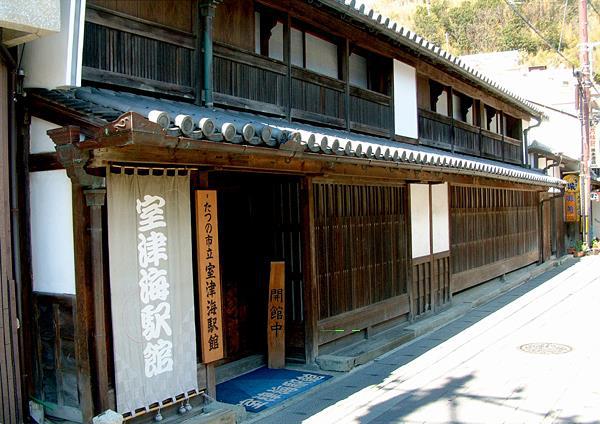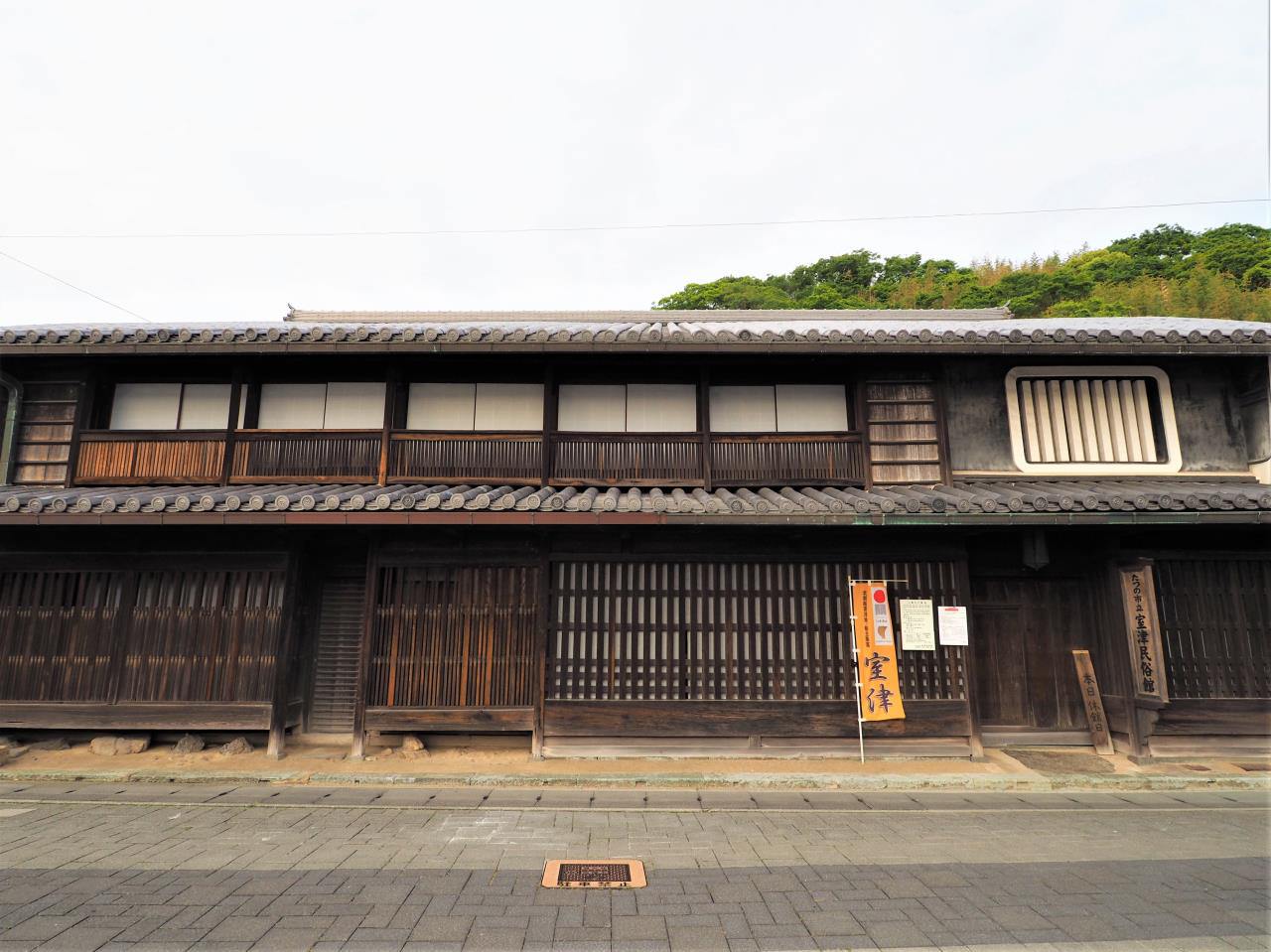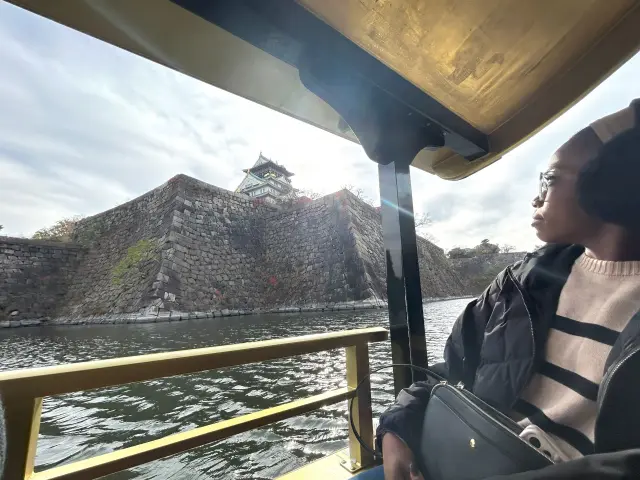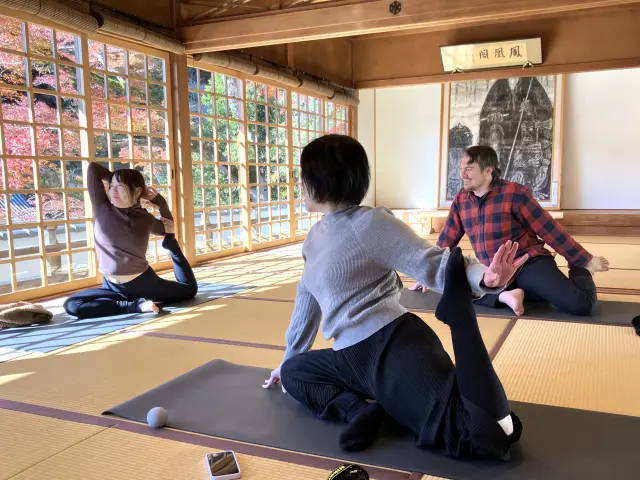
The port of Harima
Last update
Ports established by Gyoki enabling the transportation of copper for the creation of the Great Buddha of [Todaiji Temple](https://kansaiguide.jp/rt/eng/spot2/detail/?item_id=SPOT002072)
The Seto Inland Sea has long played a key maritime role in this region. Due to its strategic location surrounded by the Honshu mainland, Shikoku and Kyushu, in ancient times, it connected China and Korea with Nara and Kyoto, which were the main trading hubs in Japan at that time. In this way it was very similar to the Mediterranean Sea, which acted as a commercial and cultural transportation link between the East and Europe.
The easternmost part of the Seto Inland Sea, called The Sea of Harimanada, is an important route that connects the mainland via the Akashi Strait. In the 8th century, several ports were established along the Harimanada coast by a priest who was one of the Shisho, or four main people involved in the construction of Todaiji Temple.
This priest, named Gyoki, was tremendously well respected by the public during the early 8th century, mainly due to his extraordinary contributions to society, such as missionary work, helping the poor and flood control construction projects, predominantly in the Kinki region. In a supreme effort to improve people’s safety, he developed a great amount of infrastructure, including reservoirs, bridges and moats, which attracted numerous volunteers, sometimes exceeding 1,000 in number. Emperor Shomu, recognizing Gyoki’s popularity, assigned him to take charge of the building of the Great Buddha of Todaiji Temple, even though he was 76 years old. It was one of the largest projects ever undertaken over the centuries, and was a huge challenge for him as it required all his accumulated wisdom and experience.
Naturally, the appropriation of a massive amount of copper was necessary to build a statue of that size, so the plan was to transport copper from the nationally-owned Naganobori Copper Mine in Nagatonokuni (in present-day Yamaguchi Prefecture) to the temple in Nara. An undertaking of this size, therefore, required the establishment of ports between Harima (present-day western Hyogo) and Settsu (in present-day Osaka and eastern Hyogo) on the Seto Inland Sea.
According to Gyoki’s plan, five ports would need to be established, considering the possible travel distance per day, and these were Murotsu, Kara, Uozumi, Owada and Kawajiri ports, which were collectively named Seppan-gohaku. These were constructed not only to facilitate the sectioning of such a long journey, but also to provide moorage for avoiding natural hazards, such as strong winds and rough seas. These ports then went on to prosper during the period between the 8th and 14th centuries.
One of these ports, Murotsu Port in Tatsuno City is located in an excellent natural harbor, which lies downstream of the Ibo River. This is the only port, out of the five established by Gyoki, that still preserves the atmosphere of those ancient times 1,300 years ago, and after its establishment it became the commercial hub for marine transportation in the eastern part of the Seto Inland Sea. Furthermore, in the 17th century, during the Edo Period, the Sankin-kotai system (the feudal lords’ alternate-year residence in the capital) boosted traffic along this route as the mass-movement of both commodities and people from the regions to the capital increased dramatically. This transformed the functions of these ports from just convenient anchorages to gateways for receiving people to live in or visit the area.
Murotsu became especially international because it started acting as a transit point connecting China and Japan, and also received a number of people from other countries, such as Korea and the Netherlands, even under the isolation policy enacted during the Edo Period. Two merchants’ residences from that time have now been transformed into the Murotsu Museum of Sea Port and the Murotsu Museum of Folklore, exhibiting a variety of resources that showcase how much this area actually prospered due to this small port.


There are other interesting features in areas along The Sea of Harimanada, which include the port town of Sakoshi in the eastern part of Ako City, Hyogo Prefecture. Sakoshi Bay, surrounded by lush greenery, is known for the delicious oysters cultivated locally in nutrient-rich waters. The port was originally a simple anchorage, but went on to flourish during the Edo Period, just like Murotsu. During the 18th century, it acted as a key anchorage for the Kitamaebune merchant ships that sailed between Osaka and Hokkaido, and salt produced locally was shipped from here. The townscape along the Sakoshi Daido road that connects the dock at Chikusa River and the Sakoshi Port has been preserved and maintained to demonstrate the atmosphere of the past. The Okuto Sake Brewery Museum here exhibits historic items kept by the Okuto family, who have been running a brewery, and were once successful shipping merchants, since the Edo Period. The items exhibited here include both brewing implements and everyday tools, as well as documents from the shipping merchant business.
Another interesting feature are the Ieshima Islands, comprising of over 40 islands of different sizes. There are several natural harbors here, which used to serve as important points of shelter from the often harsh climatic conditions along the sea lanes in the Seto Inland Sea, as the islands also once prospered as a key fisheries hub for the region. Ieshima Shrine can be found on the main island, Ieshima, and is the head shrine among all those on the islands here. Ieshima, literally meaning “home island,” was so named as the Emperor Jinmu was said to have declared on his way to Yamato (present-day Nara) that the port here was so peaceful that it felt like being at home.
At the end of the 16th century, rock extracted from these islands was carried out and transported on ships in order to construct the stone walls of Osaka Castle. A successful quarrying industry was developed here mainly due to the fact these islands consisted of hard rock, such as rhyolite and granite, and the rugged coastline was exposed, making it convenient for shipping. In recent years, rock from these islands has been used in such projects as the construction of Kansai International Airport. Quarrying as an industry is still ongoing, and continues to change the shape of Nishi, Tanga, and Boze islands.
Due to the topography of Japan, transportation by sea used to be a lot more efficient and faster than that by land, especially for larger items in great amounts. Therefore, the Harima area along the Seto Inland Sea played a key role as a transportation hub over a long period. Just like the coastal cities along the Mediterranean Sea, the area around the ports established by Gyoki equally flourished as major transportation hubs. Although this great priest actually died from an illness and was not able to witness the completion of the Great Buddha, his enormous contribution brought about both significant material and emotional wealth for later generations.
There is a statue of Gyoki in the square by Kintetsu Nara Station, the gateway for a visit to Todaiji Temple, and people often use it as a meeting spot. However, many that gather there do not know the enormous impact the efforts of this legendary priest had on this area.
Check also...

Consider your accommodation in the Kansai area!

Restrictions on Large Baggage

Reviving Past Memories and Emotions! Three spots related to the Food and Fragrance of Awaji Island!!!

Hidden Stories in Stone: Exploring Japan’s Castle Walls

Feel Like a Lord: Castle with Stunning Panorama Views

Experience the True Essence of Japan through Castles, Cultural Treasures, and Timeless Gardens

A 3-Day Journey Along the Path of History and Culture: Outlining the Saigoku Kaidō from Osaka

